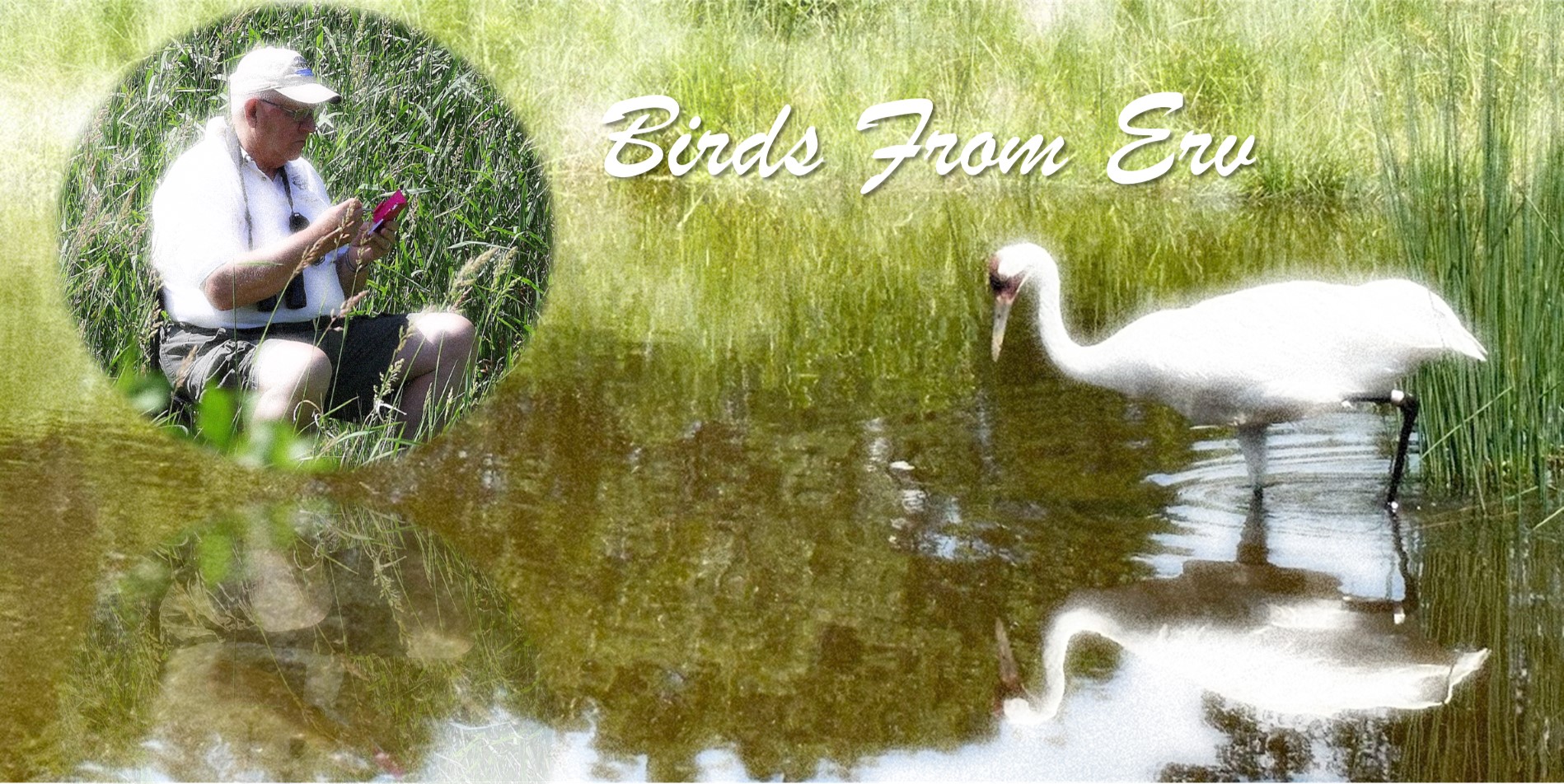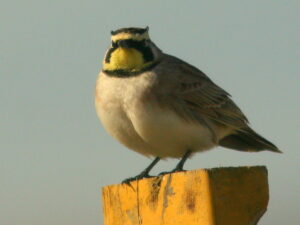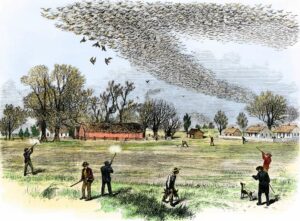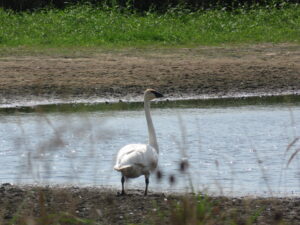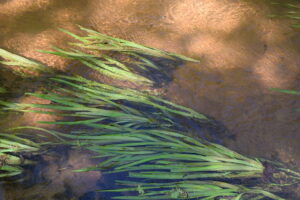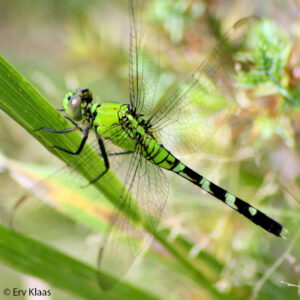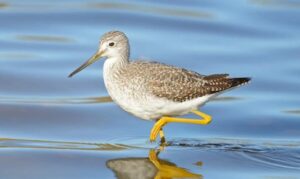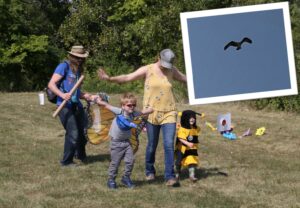Erwin “Erv” Klaas died on Saturday July 6. His passing is a great loss for Prairie Rivers of Iowa. He served on the board since its founding in 2001, started an endowment for the organization in honor of his wife Janet, and was a reliable presence at our events.
I received the news of his death on Sunday while visiting the International Crane Foundation with my family. We were watching a whooping crane, and my mother immediately recalled a birding trip that Erv had led to Nebraska’s Platte River many years back, perhaps as a contribution for our church’s silent auction. Among the awe-inspiring flocks of thousands of grey-feathered sandhill cranes, Erv had his binoculars trained on a single white-feathered whooping crane and was trying to help the rest of the group spot it. Mom said it was like a page out of “Where’s Waldo!” It’s a fun image to recall a one-of-kind ornithologist who loved sharing his passion for nature with other people.
Let’s think of Erv whenever we raise our binoculars! Here are five other birds (plus one plant and two insects) that remind me of his life and legacy.
Horned Lark (Eremophila alpestris)
Shortly after I was hired, Erv took me for a driving tour of the Ioway Creek watershed. As an assistant commissioner for the Story County Soil & Water Conservation District (and a representative for the group on the Watershed Management Authority), he was well-aware of how some farming practices could degrade soil, water, and wildlife habitat, while other farming practices could preserve them. He pointed out examples of both on our drive. At one point, he told me to pull over so he could take out his binoculars and get a better look at a flock of non-descript birds hopping and fluttering about on the open fields. Up close, they’re adorable! Horned larks are gregarious birds that form large, mixed-species flocks, which could describe Erv too!
Passenger Pigeon (Ectopistes migratorius)
Erv believed that care for the land and its creatures is an ethical imperative. Toward that end, he organized a regular event where residents of Ames and the surrounding area would gather to read passages from Sand County Almanac and other essays by Aldo Leopold. One that I find especially moving is “On a Monument to the Pigeon,” first delivered in 1947, which includes poetic lines like this:
There will always be pigeons in books and in museums, but these are effigies and images, dead to all hardships and to all delights. Book-pigeons cannot dive out of a cloud to make the deer run for cover, or clap their wings in thunderous applause of mast-laden woods. Book-pigeons cannot breakfast on new-mown wheat in Minnesota, and dine on blueberries in Canada. They know no urge of seasons; they feel no kiss of sun, no lash of wind and weather. They live forever by not living at all.
Trumpeter swan (Cygnus buccinator)
The trumpeter swan could have gone the way of the passenger pigeon (there were only 69 birds remaining in the continental US in the 1930s) but the population has made an impressive recovery (63,000 by 2015). Erv is part of that conservation success story: in 1971 he joined the US Fish and Wildlife Service and conducted research on the effects of DDT on birds that helped lead to a national ban in 1973. It’s been a great joy to see large flocks of trumpeter swans on the lake at Ada Hayden Heritage Park, another of Erv’s signature projects. They also like CREP wetlands constructed to improve water quality; that’s where we spotted this one!
Tape grass (Vallisneria americana)
This aquatic plant is an important food source for waterfowl and nursery for fish. It has an amazing pollination strategy, with boat-like male flowers and corkscrew-stemmed female flowers! Anne Kimber (my stepmother) studied this plant for her PhD and remembers Erv’s kindness when she ran into difficulties with the field work. I have similar memories. After some setbacks with a data analysis project, I received a phone call from Erv offering encouragement. He told me that I was a scientist in practice if not in credentials, that my work was important, and encouraged me to seek out collaborators and look for ways to bring it to completion. I took his advice.
Eastern Pondhawk (Erythemis simplicicollis)
This is one of many photos that Erv took of adult dragonflies and damselflies at Ada Hayden Heritage Park, continuing his dedication to science in retirement as a volunteer. The aquatic juveniles showed up in his nets when he surveyed benthic macroinvertebrates for the IOWATER program. He monitored water quality monthly at two sites on Ioway Creek from 2002 to 2015, at one point finding unusual bacteria results that were traced back to a cracked sanitary sewer. The IOWATER program is ended, but Prairie Rivers of Iowa continues to support volunteer water monitoring in Story County and is building tools and relationships to help groups across the state learn more from the data they are collecting.
Greater Yellowlegs (Tringa melanoleuca)
I saw one of these unmistakable shorebirds while paddling on the Skunk River below Ames. It was on its spring migration from the Gulf Coast to the Hudson Bay. They are pretty common now, but could be in trouble as the planet warms. Erv was deeply concerned about the impact of climate change on wildlife, water and people here in Iowa and around the world, and founded the Ames Climate Action Team to nudge the City government toward more aggressive action. It’s a great example of “think globally, act locally.”
Osprey (Pandion haliaetus) & Monarch Butterfly (Danaus plexippus)
While families were tagging monarch butterflies and doing hands-on educational activities at Ada Hayden Heritage Park, I spotted this osprey soaring overhead. The “Monarch Magic” event in 2023 exemplifies what Prairie Rivers of Iowa does best: initiating conversations and building partnerships to do things together that no one organization would have attempted on their own, and educating the public to deepen our connections to the places where we live. Our new pollinator specialist (Katelyn Rinicker) is already working on planning the next one. It’s one way Erv’s legacy lives on, even among people who never met him.

